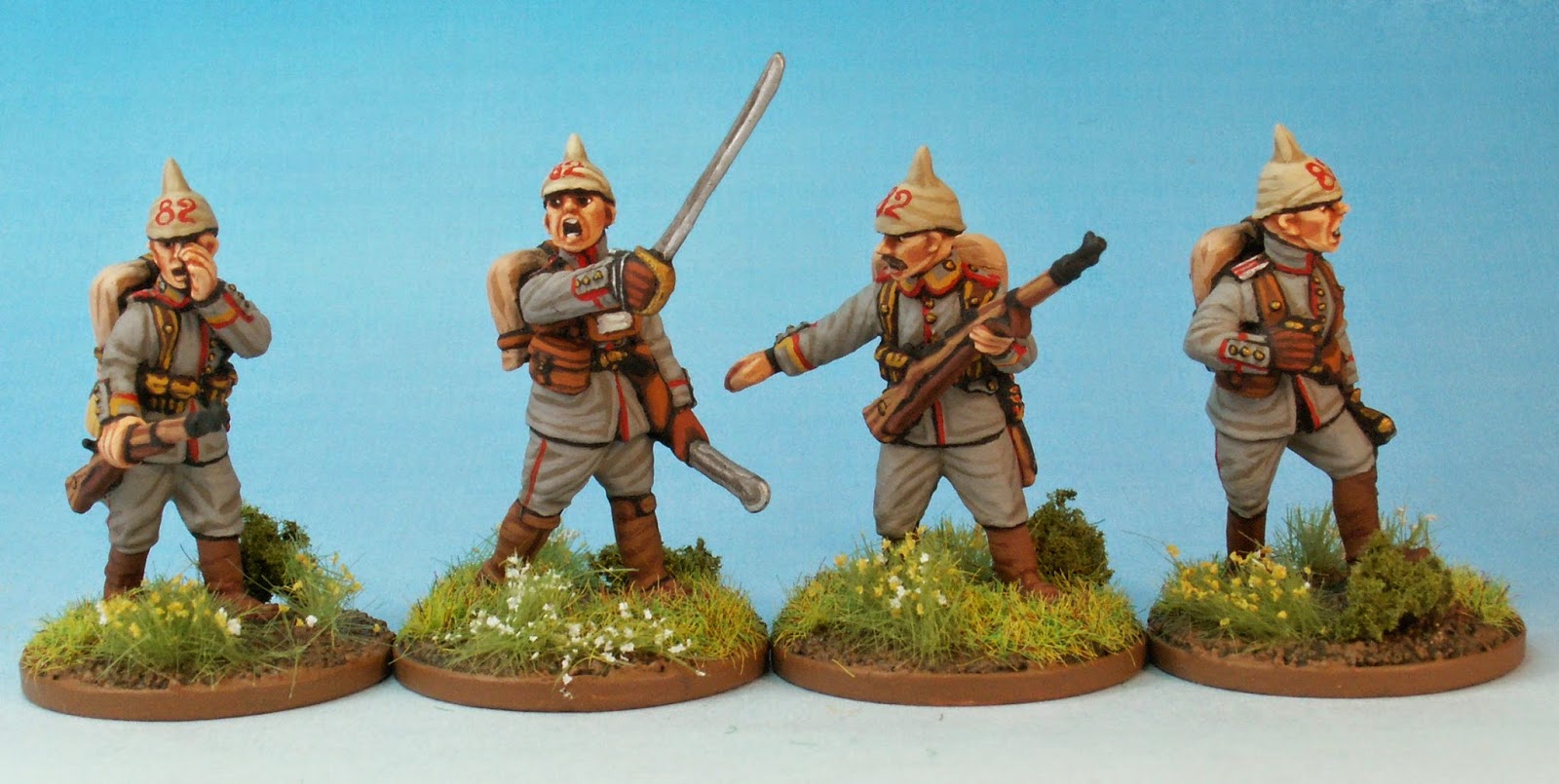Having been alerted to the release of three paint sets I took the plunge and ordered these via the miracle of PayPal on the interweb from the AK Interactive website. Here are the links to each paint set:
British WW1 Uniform
German WW1 Uniform
French WW1 Uniform
At £5.40 a set (current exchange rate) they are not a bad price, but postage from Spain is payable unless you purchase £70 worth of goods.
First up... the German Uniform triad. Here it is...
The paints themselves are very comparable to Vallejo Model Colour paints in terms of coverage and pigment levels.
This triad is useful to paint the TUNIC and FELDMUTZE. It is too green for the trousers.
My take on a triad as marketed thus is that the painter should be able to use the paints straight from the pot without mixing. With the German Uniform set this is true for the "Shadow" and "Base" paints but the "Light" paint is just too light for my tastes and I would recommend toning it down with a little of the "Base" paint. Here are the results on a Mutton Chop figure in light order kit (more tunic is exposed). The red band on the feldmutze has been covered with a khaki band.
The end result is a darker field grey than I would normally paint, and this makes the difference between the "Base" and "Light" shades even more pronounced. Here is an image comparing this triad to my normal field grey recipe of a base of VMC Olive Drab, a mid tone of VMC Field Grey and a highlight of Field Grey lightened with the addition of a little light grey paint.
The British Uniform set is a very brown khaki whereas my personal preference is to have a more greenish tone. As I approached the paints my first thought was that, again, the "Light" paint was too light. Here is the triad and a GWM dismounted Cavalry trooper to show the result . The cap, tunic and puttees are painted with this triad (the riding breeches on this figure are NOT done with this triad but with VMC US Field Drab highlighted up with VMC Pale Sand).
Once the figure was varnished the contrast between the "Light" and "Base" shade is not as pronounced as I had initailly feared and the end result also contained enough green to satisfy me. Here is an image of this figure next to a GWM Tommy painted up in my normal khaki recipe of a base of VMC Russian Green, a mid tone of VMC English Uniform and a highlight of VMC Green Brown.
Having seen the end result I will definitely use this tiad to give a little variation of khaki shades within a unit.
Sadly, I have no French figures in the leadpile so all I can give you is an image of the French Horizon Blue triad in the pot and a swatch painted onto white paper. The "Light" paint seemed a bit lacking in pigment, but that may well be because I had not shaken up the pot enough.
So, an overall verdict? Well, I bought them and I shall use them but certainly in regards to the German and British Uniform sets the similar results can be obtained without the expenditure... unless the lure of some of AK Interactive's paint sets for WW1 and WW2 AFVs means you need to top up the order to £70!












































.JPG)
.JPG)












